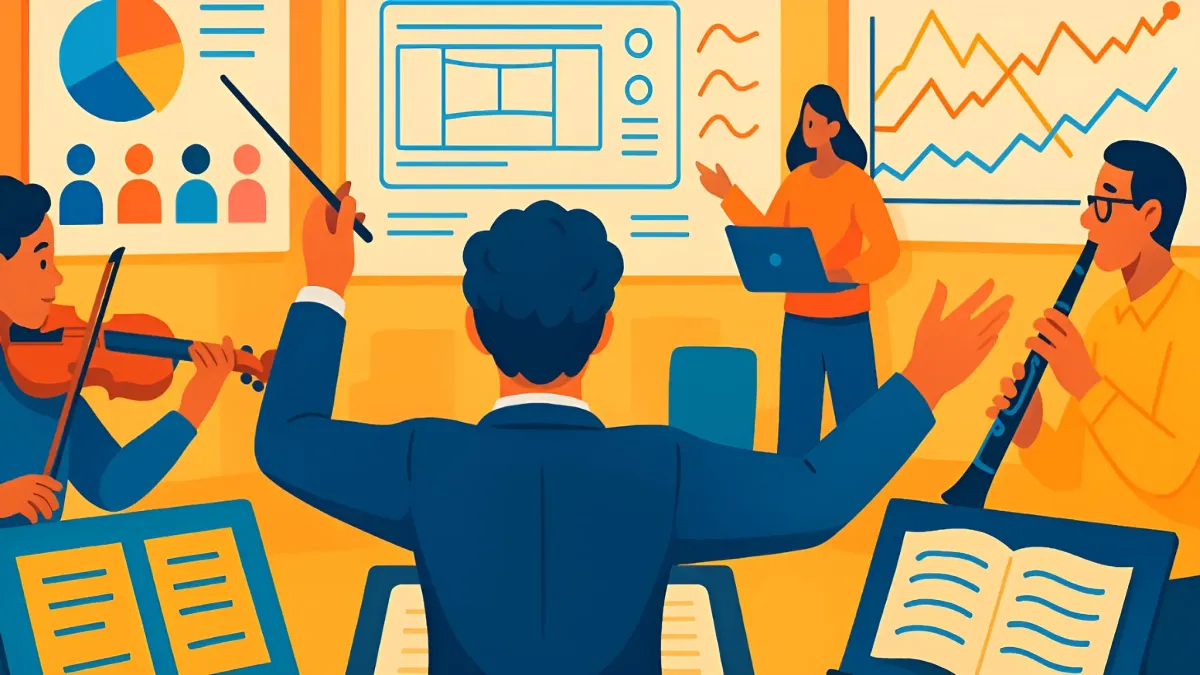Forget the roadmap: conduct like a Chief Product Engineer with an Obeya
The obeya is your product’s score, where the Chief Product Engineer conducts alignment, coherence, and true customer value.

Imagine a world-class orchestra preparing for a high-stakes performance. Each musician is a master of their craft: the violinist understands nuance and tempo, the percussionist holds the rhythm, the wind players shape the atmosphere. Individually, they are brilliant. But without a conductor, what they produce isn’t music—it’s noise.
Now picture the conductor.
They don’t play every instrument. They don’t micromanage every note. But they listen, anticipate, and guide. They see the whole score: the flow, the tension, the resolution. And when a single section starts to drift, they bring it back. The conductor ensures coherence.
This is the role of the Chief Product Engineer, and the obeya is their score, their space, and their baton.
In product development, it is easy to focus on speed, iteration, and delivery. We fill roadmaps, ship sprints, and track OKRs. But like an orchestra without a conductor, we risk misalignment, fragmentation, and noise.
That’s where the obeya makes a huge difference.
For a Chief Product Engineer, the obeya is not just a status room or dashboard. It is a space for orchestration.
It makes visible the tensions in the product, where performance is nearing the edge, where technical trade-offs are being debated, and where team intentions don’t yet align. The obeya reveals friction before failure. It connects the engineering melody to the customer rhythm.
Just like a conductor walks through sections during rehearsals, understanding what each musician is trying to express, the Chief Product Engineer uses the obeya to:
- Sense how each specialist interprets their role
- Spot inconsistencies in reasoning or assumptions
- Align different decisions into a single, coherent product vision
What is in an Obeya?
Think of each wall of the obeya like a section of the orchestra, with its own sheet music, rhythm, and contribution to the final piece:
- One wall helps you see the audience clearly: who you're playing for, what they deeply care about, what moves them, and what they will not tolerate. You will find elements like customer preferences, complaints, and user segment profiles.
- Another brings the product into focus: its architecture, how systems interconnect, the design performance constraints that must be respected, and the difficult trade-offs under discussion.
- A third wall captures competitor themes: how others are solving the same problems, and what they are doing better, pushing you to raise your game.
- There are panels that show how the ensemble is progressing: timelines, milestones, risk points, major engineering changes and where different sections may be drifting.
- Some surfaces are spaces for problem-solving and improvisation: ongoing issues, technical hurdles, and places to test hypotheses together.
- And in the background, there is a guiding score: a shared vision, high-level objectives, and the tempo that keeps everyone in sync, ideally a concept paper.
You won’t find blueprints in an obeya. You will find live interpretation, ongoing adjustments, and the pulse of the product.
Why it works
The obeya gives the Chief Product Engineer:
- A live view of complexity across teams
- A forum for early discussion and resolution
- A way to protect product coherence from fragmentation
- A means to keep the focus on what matters most to clients
It gives the team a shared rhythm to play in. It doesn't promise perfection, but like a conductor in front of a difficult score, it gives you the chance to get it right. Because in the end, building great products is not just about getting everyone to play, it is about getting them to play together.
That’s what the obeya is for and why the Chief Product Engineer leads like a conductor.
Initially published by Sandrine on LinkedIn